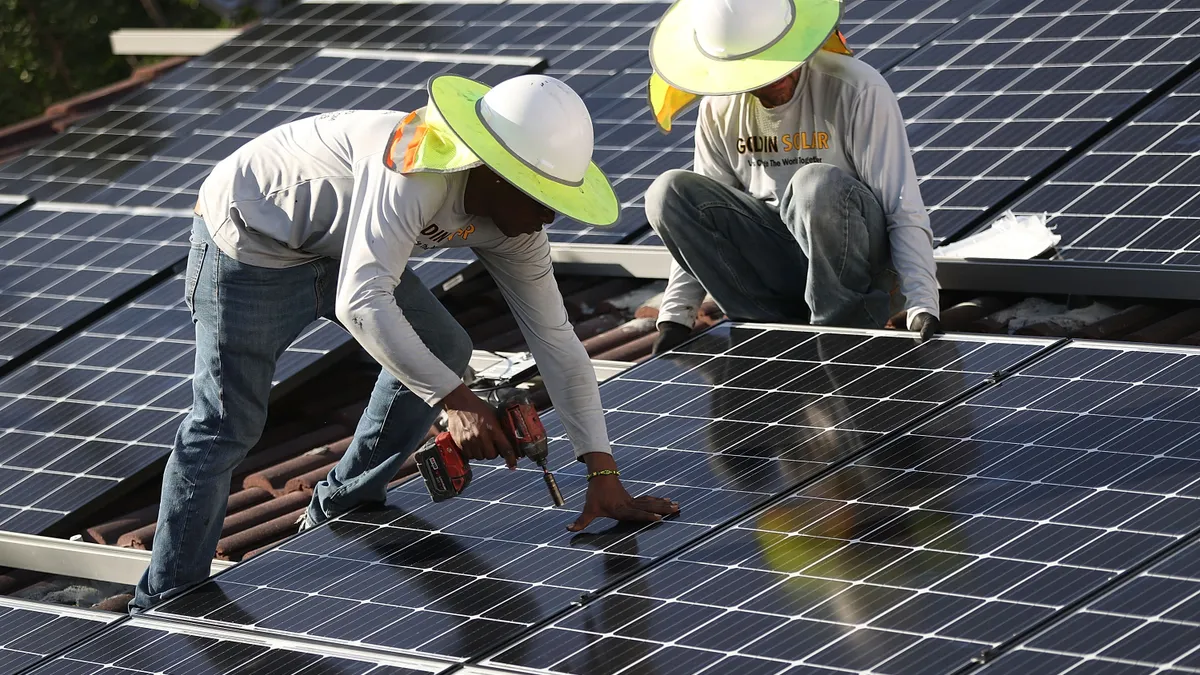Dive Brief:
- More than 50 U.S. mayors want more clarity in proposed federal guidance on how localities can access tax credits for city-owned clean energy projects, according to an Aug. 14 letter from Climate Mayors to the U.S. Treasury Department and Internal Revenue Service.
- The Inflation Reduction Act will soon make such incentives, long available to corporations, accessible to cities for the first time, presenting “an incredible opportunity to turbocharge local climate action,” a Climate Mayors press release says.
- But localities have limited staff and resources and need federal agencies to be as clear as possible about the full extent that cities can access the credits without being penalized, the mayors’ letter says.
Dive Insight:
The race is on in many cities to meet looming decarbonization deadlines. But an energy transition doesn’t come for free, and the Biden Administration’s “direct pay” incentives aim to soften the upfront financial blow on cities and other eligible entities.
Also known as “elective pay,” the incentives allow tax-exempt entities — including state and local governments, nonprofits and tribes — to receive a payment equal to the full value of tax credits for building qualifying clean energy projects. That includes endeavors such as building community solar, purchasing clean fleet vehicles, developing battery storage and increasing electric vehicle charging infrastructure.
The Biden Administration and Climate Mayors have described the incentives as “game-changing.” That may well be true, at least according to a report published last month by the Alliance for a Sustainable Future, a joint effort of the U.S. Conference of Mayors and the Center for Climate and Energy Solutions.
The report described the incentives as “so significant that they may warrant a re-evaluation of some previously assessed investment opportunities,” highlighting several case studies to prove the point. In one case study, direct pay would allow an unnamed locality to financially break even up to two years earlier than it would have on fleet electrification.
But direct pay is still new terrain for localities. In June, the Treasury Department and Internal Revenue Service proposed guidance to help eligible entities understand the scope and eligibility requirements of the IRA provisions. The Climate Mayors’ letter was submitted during the public comment period on this proposed guidance, although cities have been thinking about how they can use direct payments since the IRA was enacted last year, said the organization’s policy director, Meghan Pazik.
“The overall top line of the letter was ‘Try to make the guidance as simple as possible for cities but also these now eligible entities,’” Pazik said.
In the letter, the mayors repeatedly noted their appreciation of the incentives and proposed guidance. The letter acknowledges that the Treasury, in particular, “faces an immense challenge in rolling out a program that is so new to the agency so quickly” while complying with various requirements and nuances.
But the letter is also clear about some of the challenges localities face in using the incentives. “In addition to the feedback and comments we have provided, it is critical that the Administration understands the limited capacity of localities and the need for as much clarification and specificity as possible when it comes to eligible projects, eligible entities, and the process to receive elective payments,” the letter says.
The mayors specifically recommended that the Treasury Department and IRS:
- Clarify the timeline for the process of registering for and receiving elective payment.
- Clarify which entities are eligible for elective payment. The letter specifically asks for guidance on whether local publicly owned utilities, non-rural electric cooperatives, and housing and transit authorities are eligible.
- Clarify which projects and costs can receive an elective payment. The letter points to a hypothetical geothermal system project as an example, saying that the guidance does not make it clear if elective payments would cover related costs such as indoor HVAC and heat pump infrastructure, design, labor and project management.
- Clarify in which situations localities would be penalized for receiving excessive payments.
- Work with other federal agencies to support eligible entities in stacking federal funding opportunities made available through the bipartisan infrastructure law and Inflation Reduction Act.











